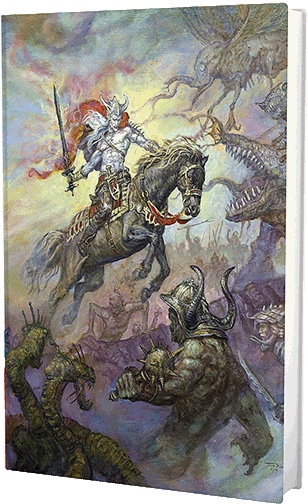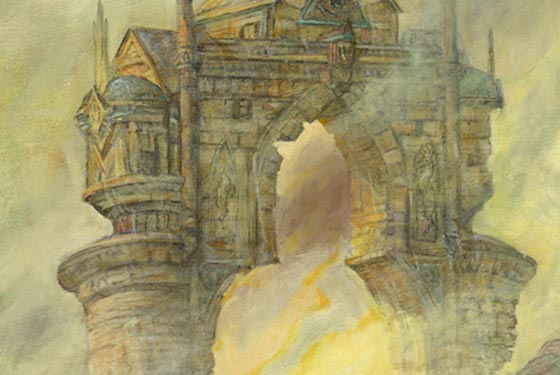



synopsis
Finally, one of the true classics in the sword and sorcery genre gets the deluxe presentation that it has always deserved. For starters, let’s begin at the beginning with thanks to two editorial geniuses one in the UK and one in the US.
The 1950s was the heyday of the digest magazine, the successor to the pulps of a previous era. There were a lot less titles published as the digest magazines had a new and formidable competitor for entertainment in leisure hours, more and more homes were installing televisions and while the most obvious victim of the TV revolution was the movie theater, the printed word and the expense of same was also having a rough go of it.
As is often the case there were blessings in disguise, the 1930s and 1940s saw the worst aggregate of bad fantasy and science fiction to ever see print. Editors were so desperate to fill magazines that even some of the worst hacks of the time bragged about placing 90% of their output. In the era of the digests, editors were having none of it and dozens of the old guard fell by the wayside losing their positions to writers who could actually write.
In England, New Worlds garnered a lot of attention, but real fans knew that the best stuff would find its way to John Carnell’s Science Fantasy. In the U.S., there was no denying the supremacy of The Magazine of Fantasy & Science Fiction, but editor Cele Goldsmith had quietly turned Fantastic and Amazing from bottom-feeders to impressive publications featuring great science fiction in one and remarkably good fantasy in the other. It should surprise no one that Michael Moorcock immediately found a home for his Elric stories with Carnell’s Science Fantasy; we Yanks had to wait about a year longer for Ms. Goldsmith to start publishing him.
The early Elric stories were gathered in a Lancer paperback under the title of Stealer of Souls, this led to a follow-up novel Stormbringer which apparently brought things to their logical conclusion. Indeed, there’s an anarchistic raging against the machine in the early Elric stories that is almost palpable to the point that there are more than a few of us scholars of the genre who believe that Moorcock needed his time with the pioneers of space-rock, Hawkwind, just to mellow out a tad…
What Michael Mooorcock has done is evolve from the angry young man who gave us Stealer of Souls to the witty and sophisticated author who is now considered one of our greatest living fantasists, and the Elric character has grown with him. Moorcock simply realized that there was far more to Elric’s story and how he grew from the spoiled princeling with a huge sense of entitlement to the doomed and noble figure he becomes in the end. What we have inFortress of the Pearl is Moorcock now at the height of his prowess as a novelist revisiting the early history of a young Elric. The stories and novels that Moorcock wrote to fill in the blanks in the Elric saga are very obviously necessary pieces of the puzzle that had been left out. Without these revisions, it is literally impossible for the Elric of Stealer of Souls to become the Elric of Stormbringer.
These are archival editions, with gorgeous illustrations and featuring guest introductions from some of the top writers in the field. Each volume will be signed by the author, introducer and artists. Ordering the three books — Elric of Melniboné, The Fortress of the Pearl, and The Sailor on the Seas of Fate — via the “add to cart” button at right will secure all matching numbers for every book in the series.
The complete contents pages of each book are shown below. The titles, contents, and order of the works appear, for the first time, exactly as Michael Moorcock has long intended, making these the most definitive sets of these books ever made available.
The Fortress of the Pearl includes the novel of the same name and one novella” “The Black Blade’s Song.” It also has an introduction by Neil Gaiman and new artwork by Tom Kidd.
Information on The Fortress of the Pearl
pricing
SOLD OUT



